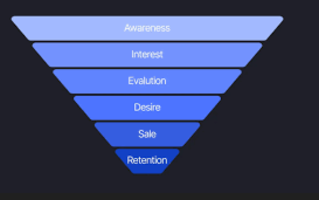Ever scrolled through your social media feed and stopped dead in your tracks because a video just grabbed you? That’s the power of engaging video content, and honestly, it’s becoming less of a luxury and more of a necessity in today’s digital landscape, which is why tips for creating engaging content go a long way.
The thing is, we’re living in a world where attention spans are shorter than ever. Studies show you have mere seconds to capture someone’s interest before they scroll past your content forever. But here’s the good news: creating engaging video content isn’t rocket science.
With the right strategies, tools, and understanding of what makes viewers stop, watch, and engage, you can produce videos that not only capture attention but also drive real results for your business or brand.
Understanding the Foundation of Engaging Video Content
Before we jump into specific techniques, it’s crucial to understand what makes video content truly engaging. Engaging videos aren’t just about high production values or expensive equipment. They’re about creating an emotional connection, delivering value, and respecting your audience’s time.
Think about the last video you watched all the way through. What kept you hooked? Was it the storytelling, the practical information, the entertainment value, or maybe the relatability of the content? These elements form the foundation of engagement, and they’re far more important than having a fancy camera or professional studio setup.
The most successful video creators understand their audience deeply. They know what problems their viewers face, what questions keep them up at night, and what type of content will genuinely help or entertain them. This audience-first approach should guide every decision you make in your video content creation journey.

How Do I Make My Videos More Engaging?- Tips for Creating Engaging Video Content
Making your videos more engaging starts with understanding that engagement isn’t accidental. It’s the result of deliberate choices in how you structure, present, and deliver your content.
Start with a hook that matters
Your opening seconds are everything. Instead of lengthy introductions or slow builds, jump straight into something that matters to your viewer. Pose a provocative question, share a surprising fact, or tease the transformation they’ll experience by watching. The hook should speak directly to your viewer’s desires or pain points.
Tell stories, not just facts
Human brains are wired for stories. Even if you’re explaining a technical concept or showcasing a product, frame it within a narrative structure. Share customer success stories, talk about your own journey, or create scenarios that viewers can relate to. Stories evoke strong feelings that facts by themselves just cannot.
Use pattern interrupts strategically
Pattern interrupts are changes in your video that reset attention. This could be a change in camera angle, a quick cut to b-roll footage, on-screen text, or even a change in your speaking pace. These interrupts prevent monotony and keep viewers actively engaged rather than passively watching.
Show, don’t just tell
Whenever possible, demonstrate rather than explain. If you’re teaching something, show the process. If you’re reviewing a product, use it on camera. Visual demonstration is inherently more engaging than talking head footage alone.
Create dialogue, not monologue
Even though viewers can’t respond in real-time, speak to them as if you’re having a conversation. Ask rhetorical questions, acknowledge common objections, and use inclusive language like ‘we’ instead of ‘you.’ This conversational tone makes viewers feel involved rather than lectured to.
Optimize for mobile viewing
Most video content is consumed on mobile devices. This means using clear visuals, readable text, and ensuring your content works well even on smaller screens. Test your videos on mobile before publishing to ensure they’re optimized for where most people will actually watch them.
How to Create a Video Content Strategy- Tips for Creating Engaging Video Content
A video content strategy is your roadmap to consistent, effective video marketing. Without strategy, you’re just creating random videos and hoping something sticks. With strategy, every video serves a purpose and moves you closer to your goals.
Define your objectives clearly
Start by asking what you want your video content to achieve. Are you building brand awareness, generating leads, educating customers, or driving sales? Your objectives will shape everything from video topics to distribution channels. Be specific about what success looks like, whether that’s view counts, engagement rates, or conversion metrics.
Know your audience inside out
Create detailed audience personas that go beyond basic demographics. Understand their challenges, aspirations, content preferences, and where they spend time online. What questions are they asking? What keeps them up at night? What kind of material do they get attract to? This deep understanding will inform every creative decision you make.
Map out your content pillars
Content pillars are the main themes or topics your videos will cover. For a fitness brand, this might include workout tutorials, nutrition advice, motivation, and transformation stories. Having three to five content pillars ensures variety while maintaining focus. Each pillar should align with both your business goals and audience interests.
Plan your content calendar
Consistency matters in video marketing. Create a realistic publishing schedule you can maintain, whether that’s daily, weekly, or monthly. Your content calendar should balance different video types, formats, and topics from your content pillars. Include seasonal content, trending topics, and evergreen material that remains relevant over time.
Choose the right platforms
Different platforms serve different purposes and audiences. YouTube excels for long-form educational content and searchability. Instagram and TikTok favor short, snappy videos with strong visual appeal. LinkedIn works well for professional and B2B content. Rather than being everywhere, focus on platforms where your audience actually spends time.
Establish your production workflow
Document your video creation process from ideation through publishing. This includes brainstorming, scripting, filming, editing, optimizing, and distribution. A clear workflow makes production more efficient and ensures consistency in quality across all your videos.
Set measurable KPIs
Identify specific metrics that indicate whether your video strategy is working. This might include watch time, completion rate, click-through rate, engagement rate, or conversion rate. Track these consistently and use the data to refine your approach over time.
What is the 5 Second Rule in Video Editing?- Tips for Creating Engaging Video Content
The 5 second rule in video editing is a guideline that suggests you should capture your viewer’s attention within the first five seconds of your video, or risk losing them forever. This principle has become increasingly important as attention spans have shortened and competition for viewer attention has intensified.
Why five seconds matters
Research consistently shows that viewers make split-second decisions about whether to continue watching a video. In those crucial first moments, they’re subconsciously asking: Is this relevant to me? Is this worth my time? Will this be interesting? If you haven’t answered these questions affirmatively within five seconds, most viewers will scroll or click away.
Implementing the rule effectively
The 5 second rule doesn’t mean cramming everything into five seconds. It means giving viewers a compelling reason to keep watching within that timeframe. This could be a provocative statement, a preview of what’s coming, a striking visual, or a question that creates curiosity. The goal is to communicate value immediately.
Practical applications
Skip lengthy intros, channel branding animations, or slow scene-setting in your opening. Start with your strongest content, then provide context as needed. Many successful creators use a technique called ‘cold open’ where they jump straight into the most interesting part of their video before doing any introduction or explanation.
Testing and optimization
Review your video analytics to see where viewers drop off. If you notice significant audience loss in the first five to ten seconds, your opening needs work. Experiment with different hooks and analyze which approaches keep viewers watching longer.

How to Make Cool Video Content-Tips for Creating Engaging Video Content
Creating cool video content is about combining creativity, technical execution, and understanding what resonates with your specific audience. Cool doesn’t necessarily mean trendy gimmicks, but rather content that feels fresh, authentic, and engaging to your viewers.
Master the technical fundamentals
Cool content starts with solid production quality. Invest in good lighting, clear audio, and stable footage. Poor technical quality immediately undermines your content, regardless of how creative your ideas are. Natural lighting or affordable LED panels can dramatically improve your video quality without breaking the bank.
Develop a unique visual style
Establish a consistent aesthetic that becomes recognizable as yours. This includes color grading, graphic elements, transitions, and overall visual tone. Your style should reflect your brand personality while standing out from competitors. Study content creators you admire and identify what makes their visual approach distinctive.
Incorporate dynamic camera work
Static shots can work, but varying your angles and movements adds visual interest. Use techniques like slow pans, strategic zooms, overhead shots, or point-of-view angles to keep visuals engaging. Even simple camera movements can make content feel more professional and polished.
Leverage creative editing techniques
Modern editing software offers endless possibilities for making content more dynamic. Jump cuts can increase pacing, transitions can create visual flow, and effects like speed ramping can emphasize important moments. The key is using these techniques purposefully, not randomly.
Add value through graphics and text
On-screen text, animated graphics, and visual callouts can reinforce your message and accommodate viewers watching without sound. These elements also create visual variety and can highlight key information or calls-to-action.
Experiment with different formats
Don’t limit yourself to one video style. Try tutorials, behind-the-scenes content, challenges, interviews, animations, or documentary-style pieces. Different formats can breathe new life into your content and appeal to different segments of your audience.
Stay authentic to your brand
The coolest content is often the most authentic. Don’t chase trends that don’t align with your brand or try to be something you’re not. Audiences can sense inauthenticity, and it undermines trust. Cool content that feels genuine will always outperform technically perfect content that feels forced.
How to Make Videos That Grab Attention- Tips for Creating Engaging Video Content
Grabbing attention in a crowded digital landscape requires understanding both psychology and platform-specific best practices. Attention-grabbing videos combine strategic elements that trigger curiosity, emotion, or interest immediately.
Optimize your thumbnail strategically
For platforms like YouTube, your thumbnail is often the first thing viewers see. Create custom thumbnails with bold text, expressive faces, bright colors, and clear composition. Your thumbnail should communicate the video’s value proposition at a glance and create curiosity about what’s inside.
Craft compelling titles
Your title should balance searchability with intrigue. Include relevant keywords for SEO, but also create curiosity or promise specific value. Use power words that evoke emotion or interest and be specific about what viewers will gain from watching.
Open with movement and energy
Static openings lose attention quickly. Start with action, interesting visuals, or dynamic movements. Even something as simple as walking toward the camera while speaking creates more energy than sitting still and talking.
Use music strategically
The right background music sets the mood and adds production value to your videos. Choose music that matches your content’s tone and energy level. Music with strong beats can make content feel more dynamic, while softer tracks work well for educational or emotional content.
Create information gaps
Tease interesting information or outcomes early without revealing everything. This creates curiosity gaps that motivate viewers to keep watching. Phrases like ‘but here’s the surprising part’ or ‘wait until you see what happens next’ signal that something interesting is coming.
Optimize video length for your platform
Different platforms favor different video lengths. TikTok and Instagram Reels perform best with short, punchy content under 60 seconds. YouTube supports longer content but rewards videos that maintain high audience retention. Match your video length to both platform norms and your specific content needs.
Include captions and subtitles
Many viewers watch videos with sound off, especially on mobile devices. Adding captions ensures your content is accessible and engaging regardless of audio. Captions also improve comprehension and allow viewers in sound-sensitive environments to engage with your content.
How to Make a Video Less Boring- Tips for Creating Engaging Video Content
Boring videos often fail not because of bad topics, but because of poor execution and pacing. Transforming boring content into engaging material is about strategic editing, structure, and understanding what creates viewer fatigue.
Eliminate unnecessary content ruthlessly
During editing, cut anything that doesn’t directly serve your video’s purpose. Long pauses, repeated information, tangents, and filler words should go. Every second should either inform, entertain, or move the story forward. If you’re unsure whether something should stay, ask yourself: “Would I watch this if I wasn’t the creator?”
Vary your pacing intentionally
Monotonous pacing kills engagement. Mix faster-paced segments with slower, more detailed explanations. Quick cuts work well for energetic content, while letting moments breathe creates emphasis for important points. The variation itself keeps viewers mentally engaged.
Use b-roll footage generously
B-roll is supplementary footage that visually illustrates what you’re discussing. If you’re talking about a process, show it happening. If you mention a location, show footage of it. B-roll breaks up talking head monotony and makes abstract concepts concrete.
Incorporate humor appropriately
Humor makes content more enjoyable and memorable, even in serious or educational videos. This doesn’t mean forcing jokes, but finding moments for lightness, self-deprecation, or playful observations. Authentic humor that fits your personality will resonate with viewers.
Break content into clear chapters
For longer videos, structure content in distinct sections with clear transitions between them. This gives viewers mental checkpoints and makes the content feel more digestible. Some platforms even support chapter markers that let viewers jump to sections that interest them most.
Add interactive elements
Polls, questions, on-screen prompts, or calls-to-action turn passive viewing into active participation. Even simple tactics like asking viewers to comment their thoughts or answer a question increase engagement and make content feel more dynamic.
Show enthusiasm genuinely
Energy is contagious. If you seem bored with your own content, viewers will be too. Genuine enthusiasm for your topic comes through in your tone, body language, and delivery. If you’re not excited about what you’re creating, reconsider whether it’s worth making.
Creating Compelling Video Scripts and Storyboards- Tips for Creating Engaging Video Content
Even spontaneous-seeming videos benefit from planning. Scripts and storyboards ensure your content stays focused, includes all necessary information, and flows logically from start to finish.
Write conversationally, not formally
Video scripts should sound natural when spoken aloud. Write the way you talk, using contractions, conversational phrases, and a friendly tone. Read your script aloud while writing to identify awkward phrasing or overly complex sentences.
Structure for retention
Follow a clear structure: hook viewers immediately, deliver on your promise, and end with a strong conclusion. Throughout, maintain momentum by previewing what’s coming and creating curiosity about upcoming segments.
Build in flexibility
Don’t script every single word unless you’re comfortable reading naturally. Many creators prefer bullet-point scripts that outline key points while allowing for natural delivery. This approach feels more authentic while ensuring you cover essential information.
Storyboard key visual moments
You don’t need artistic skills to storyboard. Simple sketches or written descriptions of each shot help you visualize the final product and ensure you capture necessary footage during filming. Storyboarding also helps identify where you need b-roll or specific camera angles.
Optimizing Video Content for Maximum Reach
Producing excellent video content is just half of the work, optimization ensures your videos reach the right audience and perform well on various platforms.
Master SEO fundamentals
For searchable platforms like YouTube, keyword research is essential. Identify terms your audience searches for and incorporate them naturally into your title, description, and tags. Create descriptive file names before uploading and include timestamps in descriptions for longer videos.
Write detailed descriptions
Video descriptions provide context for viewers and search engines. Include a summary of your video’s content, relevant links, timestamps for key sections, and calls-to-action. Descriptions are prime real estate for keywords and providing additional value to viewers.
Encourage engagement explicitly
Don’t assume viewers will engage automatically. Ask specific questions, request comments on particular topics, and remind viewers to like and subscribe if they found value. Make these calls-to-action natural parts of your content rather than tacked-on demands.
Cross-promote strategically
Share your videos across multiple platforms but adapt content for each platform’s format and audience. A long YouTube video might become several short clips for Instagram or TikTok. Repurposing content maximizes your investment while reaching different audience segments.
Analyze and iterate constantly
Study your analytics to understand what works. Which videos get the highest watch time? Where do viewers drop off? What topics generate the most engagement? Use these insights to refine your approach and double down on what resonates with your audience.
Common Video Content Mistakes to Avoid
Learning from common mistakes can save you time and frustration as you develop your video creation skills.
Ignoring audio quality
Poor audio ruins otherwise great videos. Viewers will tolerate average visuals, but bad audio drives them away quickly. Invest in a decent microphone and record in quiet environments. If background noise is unavoidable, use audio editing tools to minimize it.
Being too salesy or promotional
Viewers come for value, not advertisements. Even if your ultimate goal is selling, focus first on providing genuine value through education, entertainment, or inspiration. Build trust before asking for sales, and make promotional content feel valuable rather than pushy.
Copying others too closely
While learning from successful creators is smart, copying their style exactly makes you forgettable. Find your unique voice, perspective, and approach. What can you offer that others can’t? What’s your unique angle or personality trait that sets you apart?
Neglecting community engagement
Video marketing isn’t one-way communication. Respond to comments, ask for feedback, and build relationships with your audience. This engagement not only builds loyalty but also provides insights into what content your audience wants next.
Expecting overnight success
Building an engaged video audience takes time. Most successful video creators spent months or years refining their craft and growing their audience. Focus on consistent improvement and providing value rather than chasing viral success.
FAQs
How long should my videos be?
Video length depends on your platform, audience, and content type. For social media platforms like TikTok and Instagram Reels, aim for 15 to 60 seconds. YouTube supports longer content, with successful videos ranging from 7 to 20 minutes for most topics. Educational content can run longer if it maintains high value throughout. The key isn’t hitting a specific duration but maintaining audience retention. Analytics showing people watching most or all of your video indicate you’ve found the right length.
Do I need expensive equipment to create engaging video content?
You don’t need expensive equipment to start creating engaging videos. Modern smartphones have excellent cameras capable of producing high-quality footage. Focus on good lighting, which you can achieve with natural light or affordable LED panels, and clear audio using a budget external microphone. As you grow and generate revenue from your content, you can gradually upgrade equipment. Many successful content creators started with basic gear and prioritized storytelling and value over production quality.
How often should I post video content?
Consistency matters more than frequency. Choose a realistic posting schedule you can maintain long-term, whether that’s daily, weekly, or bi-weekly. Regular uploads train your audience to expect and look for your content. However, never sacrifice quality for frequency. One high-quality video per week will outperform seven rushed, mediocre videos. As you develop efficient workflows and systems, you can gradually increase frequency if desired.
What time of day is ideal for social media video posting?
Optimal posting times vary by platform, audience demographics, and your specific follower behavior. Generally, weekday afternoons and early evenings see high engagement, while weekends vary by platform. Instagram and Facebook often perform well during lunch hours and after work. LinkedIn favors business hours on weekdays.
Rather than following generic advice, study your analytics to identify when your audience is most active and engaged. Test different posting times and track performance to find your optimal schedule.
How do I come up with video content ideas consistently?
Building a system for content ideation ensures you never run out of ideas. Monitor comments and questions from your audience, as these reveal what information they need. Use keyword research tools to identify what people search for in your niche. Follow industry trends and news that affect your audience.
Keep a running list of content ideas on your phone or notebook, adding to it whenever inspiration strikes. Repurpose successful content in new formats or from different angles. Join online communities where your target audience gathers to understand their challenges and interests.
Conclusion
Making interesting videos is a science as well as an art. It requires understanding your audience deeply, mastering technical fundamentals, and consistently delivering value that resonates with viewers. The tips for creating engaging video content we’ve explored throughout this guide provide a solid foundation for video marketing success but remember that your unique voice and perspective are what will ultimately set your content apart.
Video content continues to dominate digital marketing, with platforms prioritizing video in their algorithms and audiences consistently preferring video over other content formats. The creators who succeed aren’t necessarily those who started with the best equipment or most polished skills. They’re the ones who committed to showing up regularly, providing value authentically, and continuously improving their craft.
Start with one video. Test these principles. Analyze the results. Iterate and improve. Before you know it, you’ll have developed the skills and intuition to create video content that not only engages your audience but also drives meaningful results for your business or brand. The opportunity is there, the tools are accessible, and your audience is waiting for the value only you can provide.



